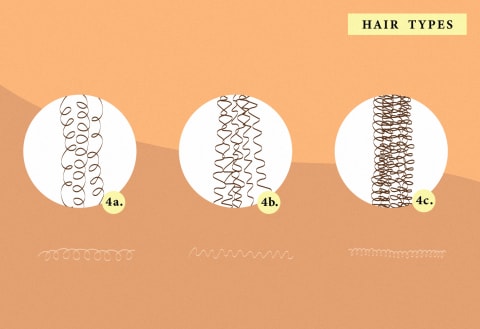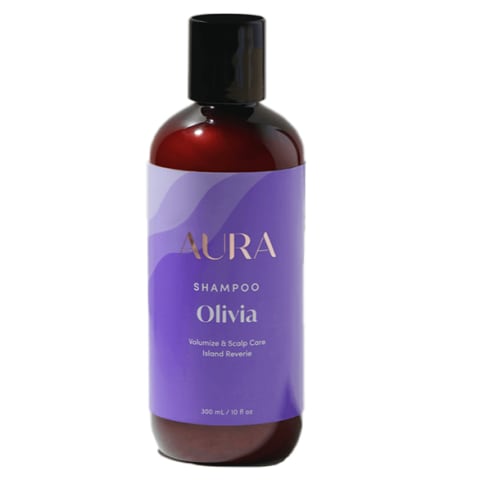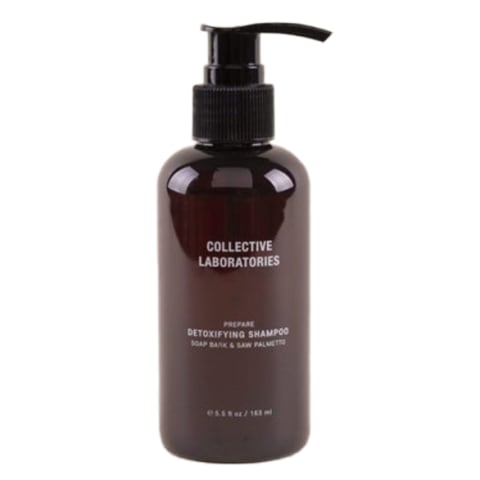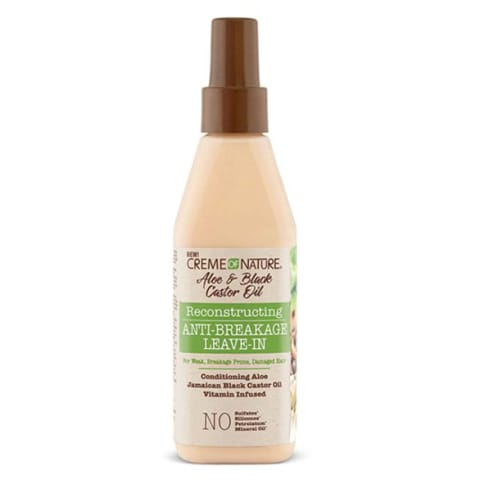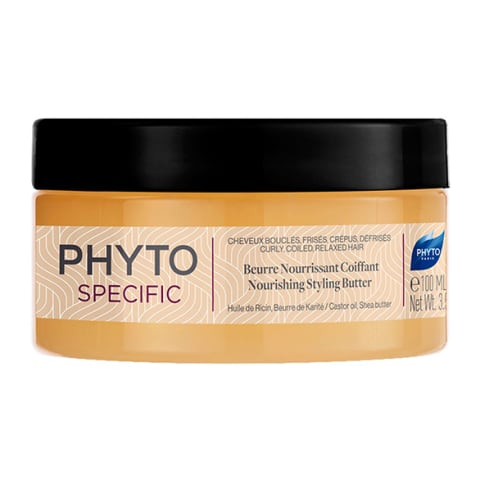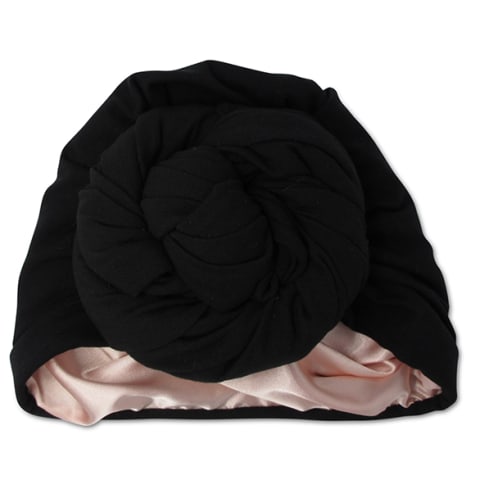As natural hair continues to grow in mainstream prominence, it only makes sense to take a deep dive into the curly world and learn more about one of the three subcategories for Type 4 hair—Type 4a. Whether you’re just beginning to transition to natural hair or find yourself caring for a child with this hair type, consider this a crash course on the basics of Type 4a hair. Type 1 refers to straight hair and doesn’t have any subcategories. But Types 2, 3, and 4 cover wavy, curly, and kinky-curly (or coily if you prefer) textures respectively. And each of these core types is further divided into three subtypes (i.e., 2a, 2b, and 2c). Technically speaking, Andre Walker’s typing system originally only allowed for two subtypes for Type 4 hair. But as the natural hair community grew, Type 4 has grown and even includes a 4d subtype. But Type 4a hair can be a bit tricky because depending on how you treat it or the products you use, 4a hair can look like a 3c or a 4b. And as is common with all Type 4s, this hair subtype has fewer cuticle layers, which means that dryness is always a concern. Likewise, issues such as shrinkage and tangling are going to be big concerns during the styling and washing processes. Type 4a hair tends to have a clear “S” pattern, which creates miniature coils. The hair is referred to as dense, with springy coils. Again, your hair could be fine or thick. When fluffed out, you’ll lose definition. But if you prefer wash ’n’ go’s or shingling, you’ll be able to clearly see a defined curl pattern. Also, note that it’s not uncommon to have more than one hair type on your head. For example, you may find that you have mostly 4a hair, but your nape is 4b — which would be even tighter coils). And remember, curl circumference isn’t a determinant of hair type. 4a hair can include people with wide and narrow curls. With that being said, some general guidelines are universal for most natural hair types. Note, we keep stressing natural hair because if you relax your hair with a chemical straightener, you’ve permanently changed your hair’s chemical bonds and you’ll face different issues than someone working with virgin (not relaxed) hair. It’s no secret that curly hair can struggle with dryness, but depending on your porosity level, you might face more moisture hurdles than others. As Patricia G. Williams, the brand educator for Creme of Nature, explains, “Knowing the porosity of your hair is as important as knowing your texture in selecting products for your hair care and styling regimen. Low or high porosity affects what products work best on your texture.” Porosity is explained with three levels — high, medium, and low. If you have high porosity hair, moisture easily slips out of the hair shaft because the cuticles are fully open. Medium porosity hair will have regular aligned cuticles. This would be considered “normal” and means that your hair can easily retain moisture. And low porosity hair struggles just like high porosity hair, but for different reasons. This type of hair has cuticles that are tightly aligned—meaning that moisture doesn’t easily penetrate the hair shaft. Thankfully, you can easily check your porosity with this one-minute test. As a general rule, you should only detangle your hair when it’s damp. Joyce Crawford, an apprentice at Gem House salon recommends that you “detangle once a week…on wet, conditioned hair. This removes all hair that’s already shed and creates room for new growth.” Even though conventional wisdom tells you that your hair is more fragile when wet, it’s also more forgiving when you need to detangle stubborn knots. Use a wide-tooth comb or finger detangle. And if needed, use a good detangling spray or even a DIY one made from a simple mix of conditioner and water in a spray bottle. But just remember that excessive exposure to heat can have drawbacks. While many people will tell you that you can heat train your hair so that it’s more “manageable,” if not done properly this can permanently damage your curl pattern. This means that the next time you wash your hair, it won’t revert to your lovely curls—you’ll have patches of straight hair mixed in. Avoid this pitfall by focusing on heatless styling methods. And when you do use hot tools, always start with a good heat protectant. Don’t crank your blow dryer or flatiron up to the highest setting. Specifically for flat irons, use just enough heat to successfully straighten or curl your hair with one pass, using the chase method for best results. Also, consider incorporating moisture-rich products such as a leave-in conditioner or moisturizer to hydrate your curls throughout the day. And focus on humectant-rich shampoos and conditioners. You may find that you benefit from swapping out a traditional shampoo (which can strip hair of critical moisture) for a gentle cleanser. Just be sure that it still effectively removes dirt and product buildup from your hair and scalp. Sunnie Brook, a celebrity hairstylist and Biolage brand ambassador, reminds us that “When you have split ends, what happens is the hair slowly splits up the shaft, which leads to breakage and slower growth.” Regardless of hair type, don’t skip a trim in the misguided belief that it’ll set you back on your hair growth journey. Monique Little, the founder of You Go Natural recommends using headgear that preserves your hair’s moisture balance thanks to a satin lining that offers “…a great alternative to cotton and wool hats and hoodies, which are a huge cause of breakage this time of year. They are great for keeping warm, and satin has been proved to lock in moisture and protect your curls from the elements.” Personalized Shampoo, Aura ($28) Detoxifying Shampoo, Collective Laboratories ($25) Aloe and Black Castor Oil Reconstructing Anti-Breakage Leave-in, Cream Of Nature ($10.43) Nourishing Styling Butter, Phytospecific ($28) Ayurvedic Deep Conditioner, Bounce Curl ($28) Miracle Drops, Kaleidoscope ($28) T-Shirt Bun, You Go Natural ($35) For example, you can choose to wash ’n’ go, set your hair on twists or braids, or even shingle your hair after it’s freshly washed. As we mentioned earlier, it’s not uncommon to have more than one hair type, so you might want to focus on styles that require setting such as twists and braids to create a more cohesive texture overall. If you love switching it up between your curls and straight hair, there’s nothing like a good silk press to create that shiny, bouncy, blowout effect. Of course, always make sure to use a good heat protectant whether you’re attempting heat styles at home or in a salon. And avoid applying too much heat to your hair. For example, if you want to simply straighten your hair, consider using a heatless stretching method like twists or banding so that you’re only exposing your hair to one round of heat. Likewise, when the weather turns cooler or you’re just ready for a change, the sky’s the limit for protective styles. While braids and twists are classic options, you can also switch it up with lace wigs or crochet styles. Just be sure to take care of the hair underneath. While protective styles can be a great way to give your hair a break so it can grow without excessive manipulation, leaving a style in too long can have the opposite effect.


